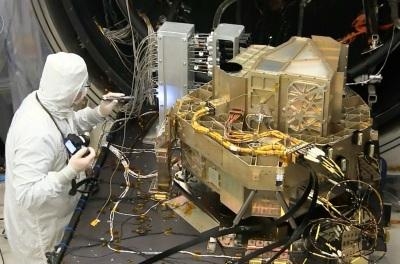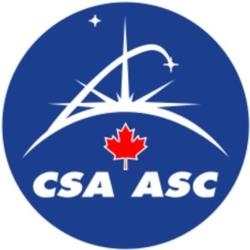Canada Delivers Its Contribution To The World's Most Powerful Space Telescope
The Canadian Space Agency (CSA) on Monday said that it has delivered its contribution to the James Webb Space Telescope (Webb), successor to the Hubble Space Telescope. The instrument arrived at NASA's Goddard Space Flight Center in Baltimore, Maryland, Monday morning, where it will be integrated into the largest, most complex and most powerful telescope ever built. Scheduled to be launched in 2018, the Webb is a joint project between NASA, the European Space Agency (ESA) and the CSA

"I'm very pleased-and privileged-that the Canadian Space Agency is supporting NASA and ESA on such an amazing international project," said Steve MacLean, President of the CSA. "There is a critical difference between Hubble and the Webb. The Webb telescope will be located 1.5 million kilometres from Earth- too far away to be serviced as we did with Hubble. At that distance, the technology simply has to work. So the work done by the Canadian team has to be exactly right."
The Canadian two-in-one instrument is the second of Webb's four instruments to be delivered. It consists of the Webb's Fine Guidance Sensor (FGS), which will direct the telescope precisely, and the Near-Infrared Imager and Slitless Spectrograph (or NIRISS) science instrument. Both were designed, built and tested by COM DEV International in Ottawa and Cambridge, Ontario, with technical contributions from the Université de Montréal and the National Research Council of Canada, and under the leadership of the FGS science team. The CSA's contribution guarantees Canadian astronomers a share of observing time once the telescope launches.
The FGS consists of two identical cameras that are critical to Webb's ability to "see." Their images will allow the telescope to determine its position, locate its celestial targets, and remain pointed to collect high-quality data. The FGS will guide the telescope with incredible precision, with an accuracy of one millionth of a degree. NIRISS will have unique capabilities for finding the earliest and most distant objects in the Universe's history. It will also peer through the glare of nearby young stars to unveil new Jupiter-like exoplanets. It will have the capability of detecting the thin atmosphere of small, habitable, earth-like planets and determine its chemical composition to seek water vapour, carbon dioxide and other potential biomarkers such as methane and oxygen.

"Scientists across the world must remember when they get their data from the Webb telescope, all of those results bear the imprint of the successful hardware contribution that Canada is providing today, because none of it would be possible without the FGS's capabilities," said Dr Eric P Smith, Deputy Program Director for the Webb telescope at NASA. "We thank the team and celebrate the effort of the CSA, its primary industrial partner, COM DEV, and the Canadian academic community for their delivery of this critical component for the James Webb Space Telescope."
The FGS-NIRISS science team is jointly led by Dr John Hutchings of the National Research Council Canada and Professor René Doyon from the Université de Montréal, Director of the Mont-Mégantic Observatory and member of the Centre de recherche en astrophysique du Québec (CRAQ). The team includes astronomers from: COM DEV; the National Research Council Canada; Saint Mary's University; the Space Telescope Science Institute (STScI); the Swiss Federal Institute of Technology Zurich (ETH Zurich); the Université de Montréal; the University of Rochester; and the University of Toronto.
 Aero-News: Quote of the Day (04.27.25)
Aero-News: Quote of the Day (04.27.25) ANN's Daily Aero-Linx (04.27.25)
ANN's Daily Aero-Linx (04.27.25) Classic Aero-TV: Veteran's Airlift Command -- Serving Those Who Served
Classic Aero-TV: Veteran's Airlift Command -- Serving Those Who Served Airborne-NextGen 04.22.25: NYC eVTOL Network, ForgeStar-1, Drone Safety Day
Airborne-NextGen 04.22.25: NYC eVTOL Network, ForgeStar-1, Drone Safety Day Airborne 04.21.25: Charter Bust, VeriJet Woes, Visual Approach Risks
Airborne 04.21.25: Charter Bust, VeriJet Woes, Visual Approach Risks




